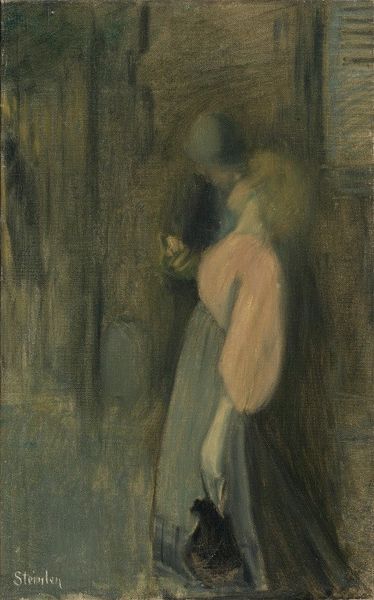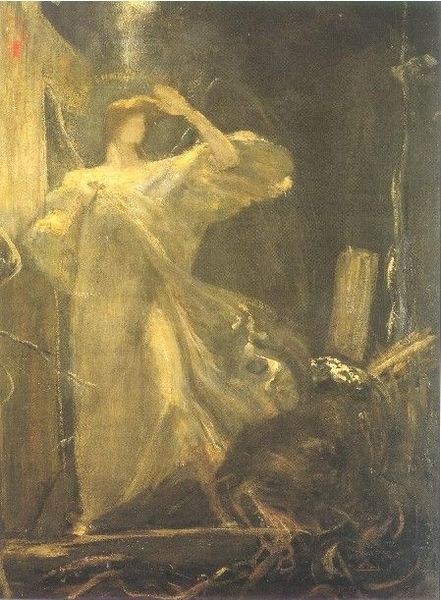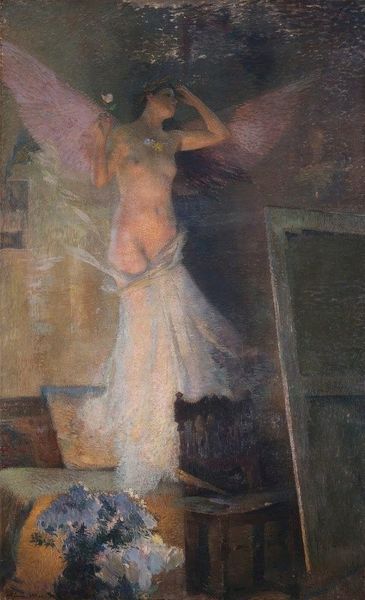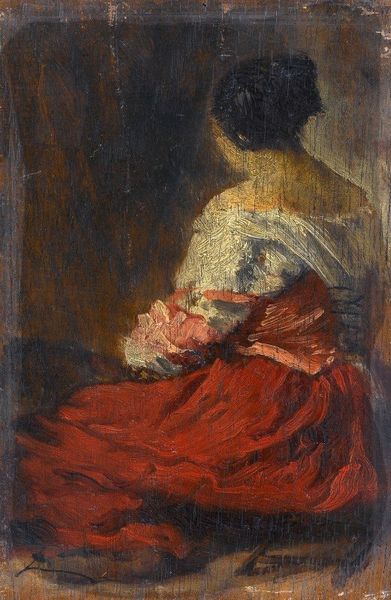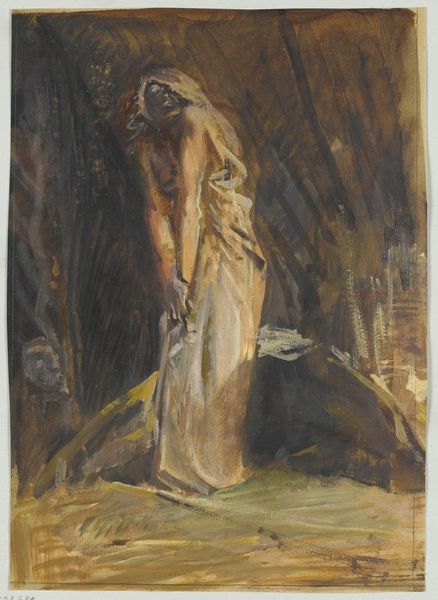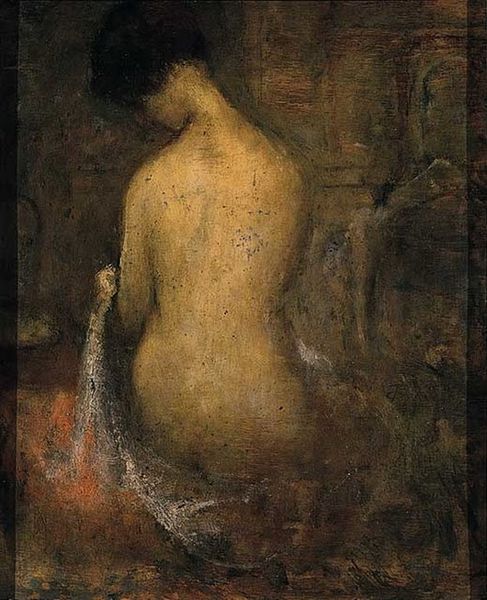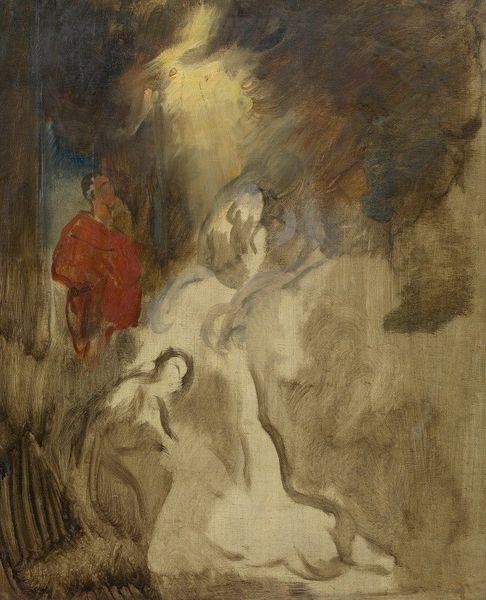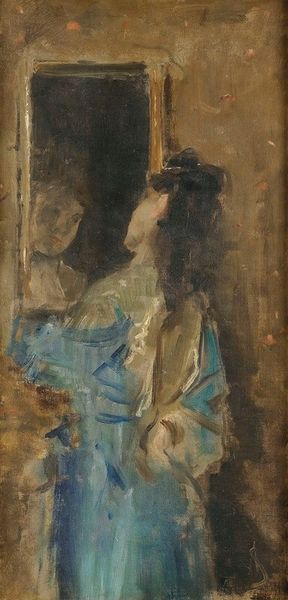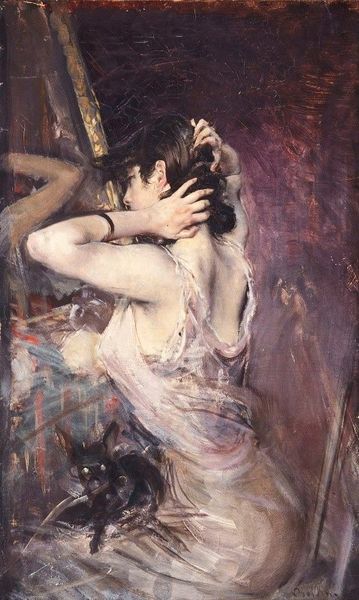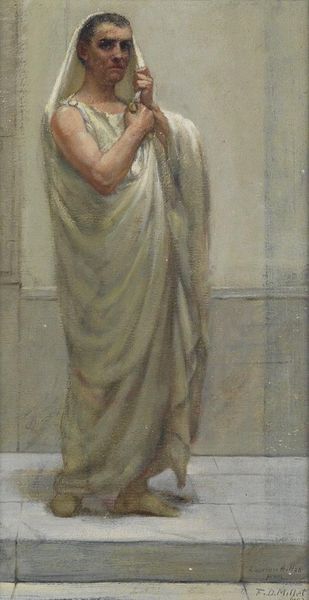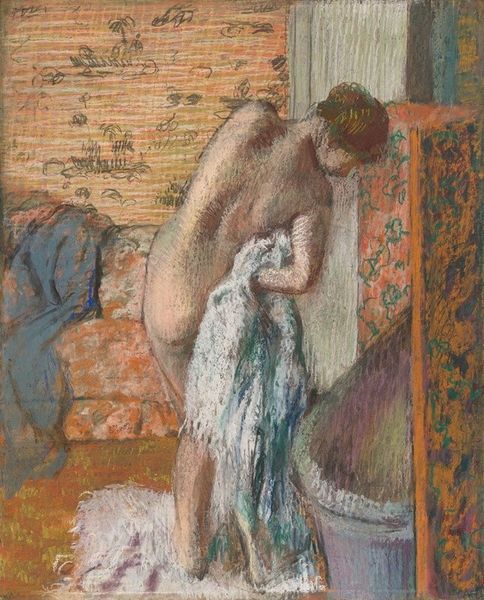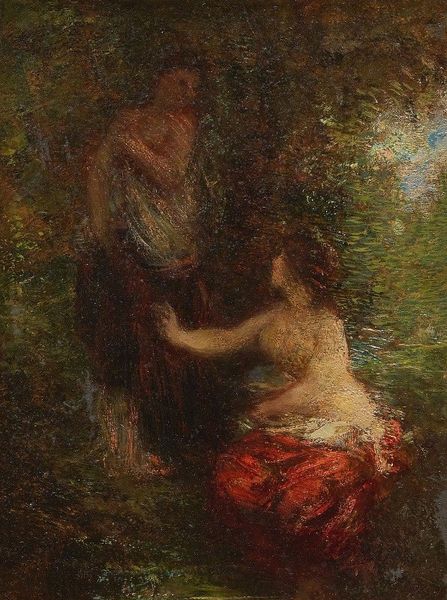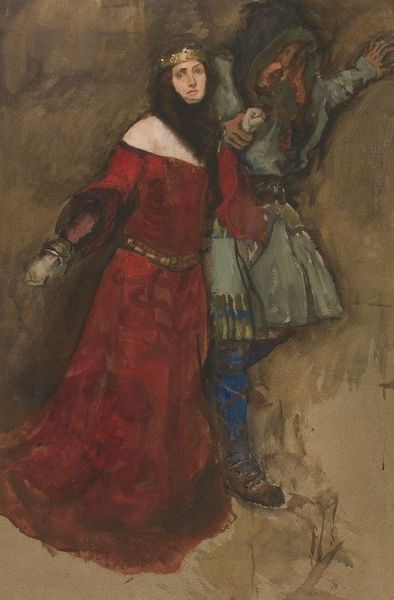
Within the Tent of Brutus; Enter the Ghost of Caesar, Julius Caesar, Act IV, Scene III 1905
0:00
0:00
Copyright: Public Domain: Artvee
Curator: Edwin Austin Abbey's painting from 1905, "Within the Tent of Brutus; Enter the Ghost of Caesar, Julius Caesar, Act IV, Scene III," really sets a dramatic stage. It is oil on canvas. What strikes you immediately about this image? Editor: The spectral figure looms – starkly contrasting with the intense crimson of Brutus's robes. The ghost is covered in blood, so there is an inescapable dread and accusation. Curator: Abbey’s work often appeared in public exhibitions and in print, like Harper’s Weekly. He contributed to a rising popular appetite for visually dynamic narratives of history, which served as moral parables in the construction of modern civic culture. Editor: I am fascinated by how artists use figures like Caesar, who embodies ideas about authority, only to depict the shattering of that order. His ghost signifies the lasting presence of actions – violent acts that stain the consciousness. The red is the guilt. Curator: The setting, with the tent and armor in the background, invokes military authority. In context, Brutus struggles with the assassination, questioning his political cause after such an uncivil deed. Abbey's illustration suggests political events affect even those with noble intentions. Editor: Visually, this is the weight of history bearing down. Blood isn't merely violence; it embodies broken taboos, personal costs, the permanent corruption that follows betrayal. It is ritual sacrifice become all too real. Curator: Abbey depicts Brutus’s inner turmoil, presenting the leader not as a decisive warrior but as a man wrestling with the consequences of political choices and actions. This representation of inner conflict certainly made it resonate across a wider public than just art enthusiasts. Editor: What a powerful combination – the chilling apparition of Caesar reminding us that symbols aren't just beautiful artifacts; they are charged with the very real power of what they represent, the values they uphold and the pain they can evoke. Curator: I think this makes me consider the visual tropes for understanding historical trauma, but the broader question about the public role for historical artwork. It certainly invites critical thinking. Editor: Yes. Thinking about such weight seems vital for both civic action, then, and psychological reflection now.
Comments
No comments
Be the first to comment and join the conversation on the ultimate creative platform.
